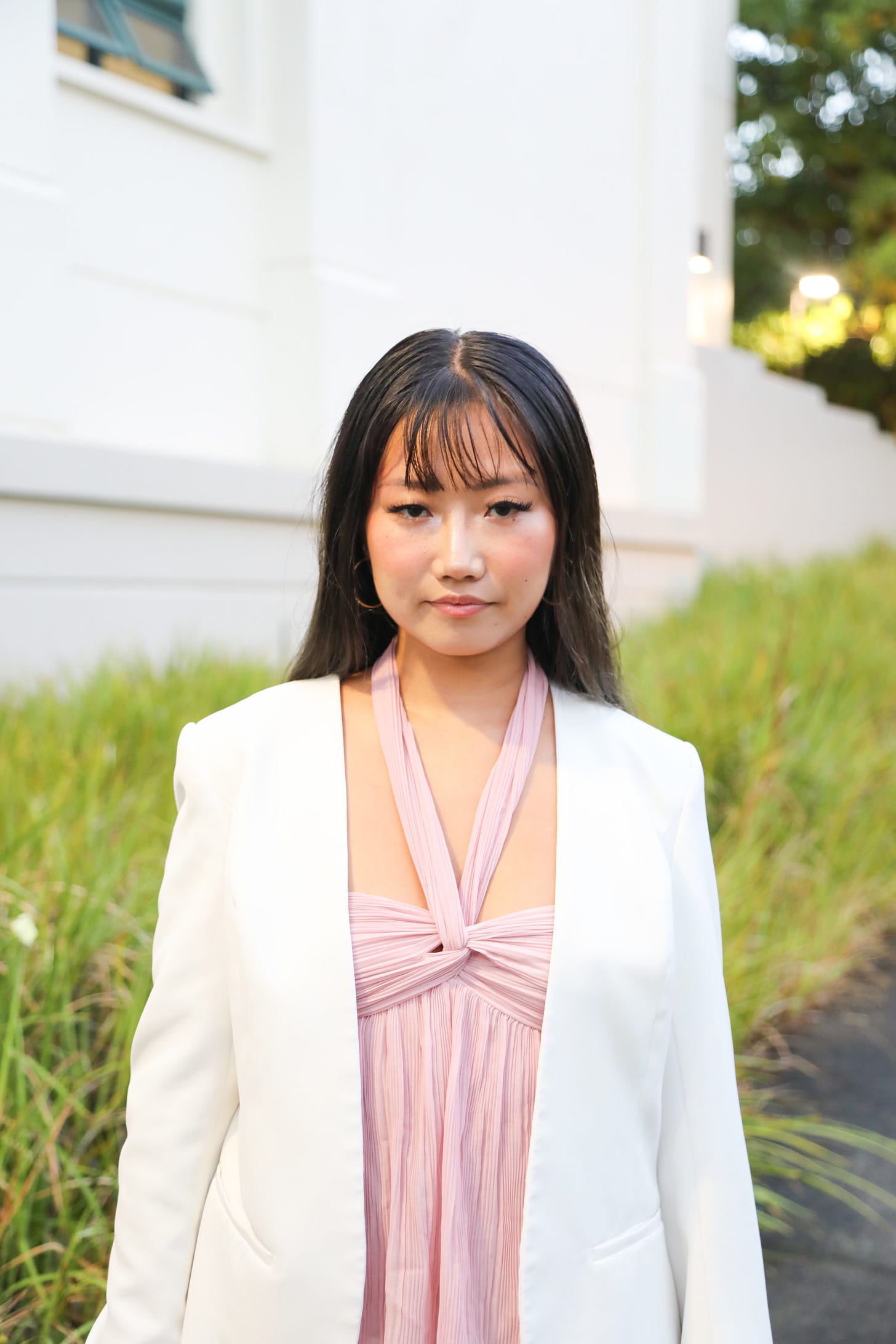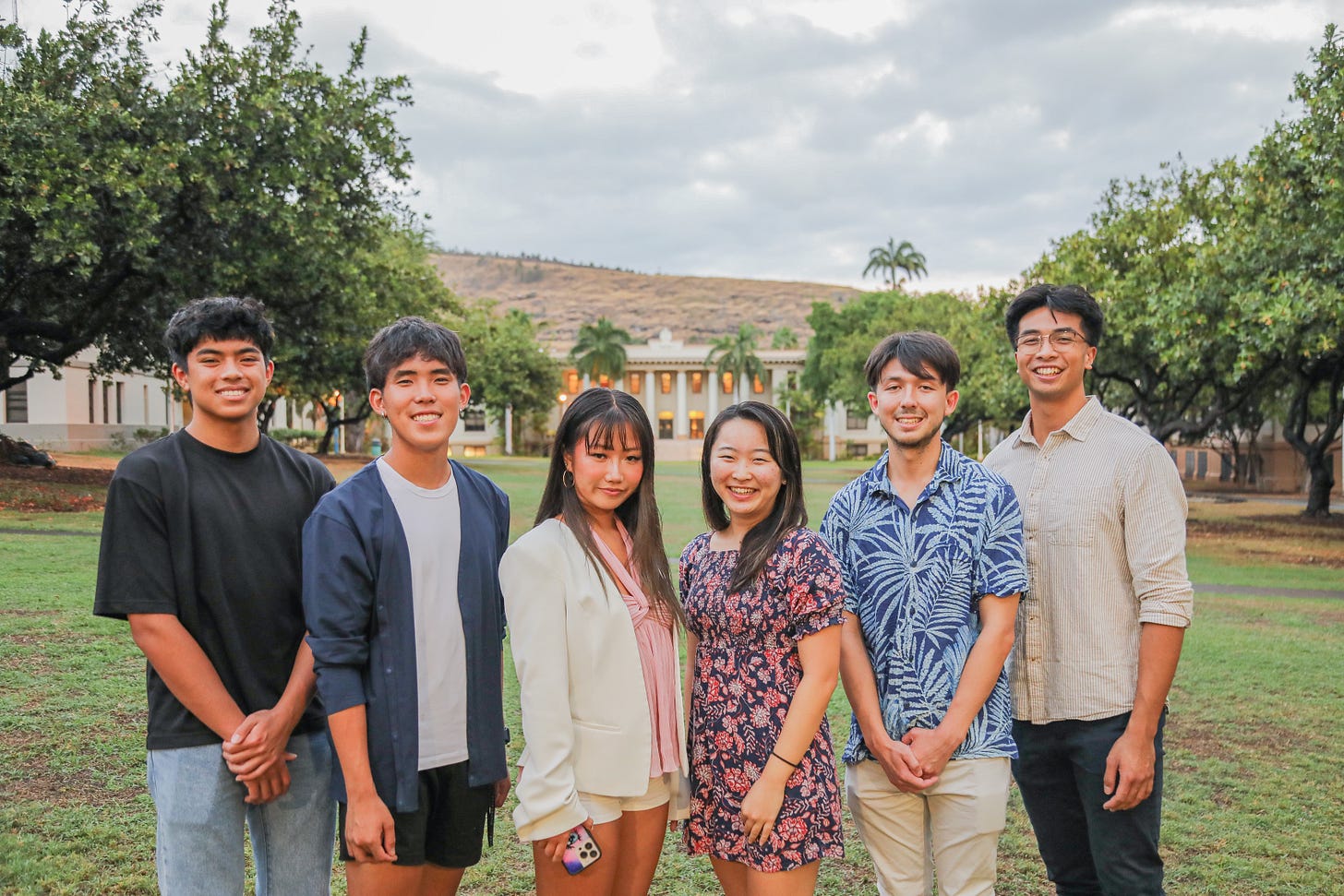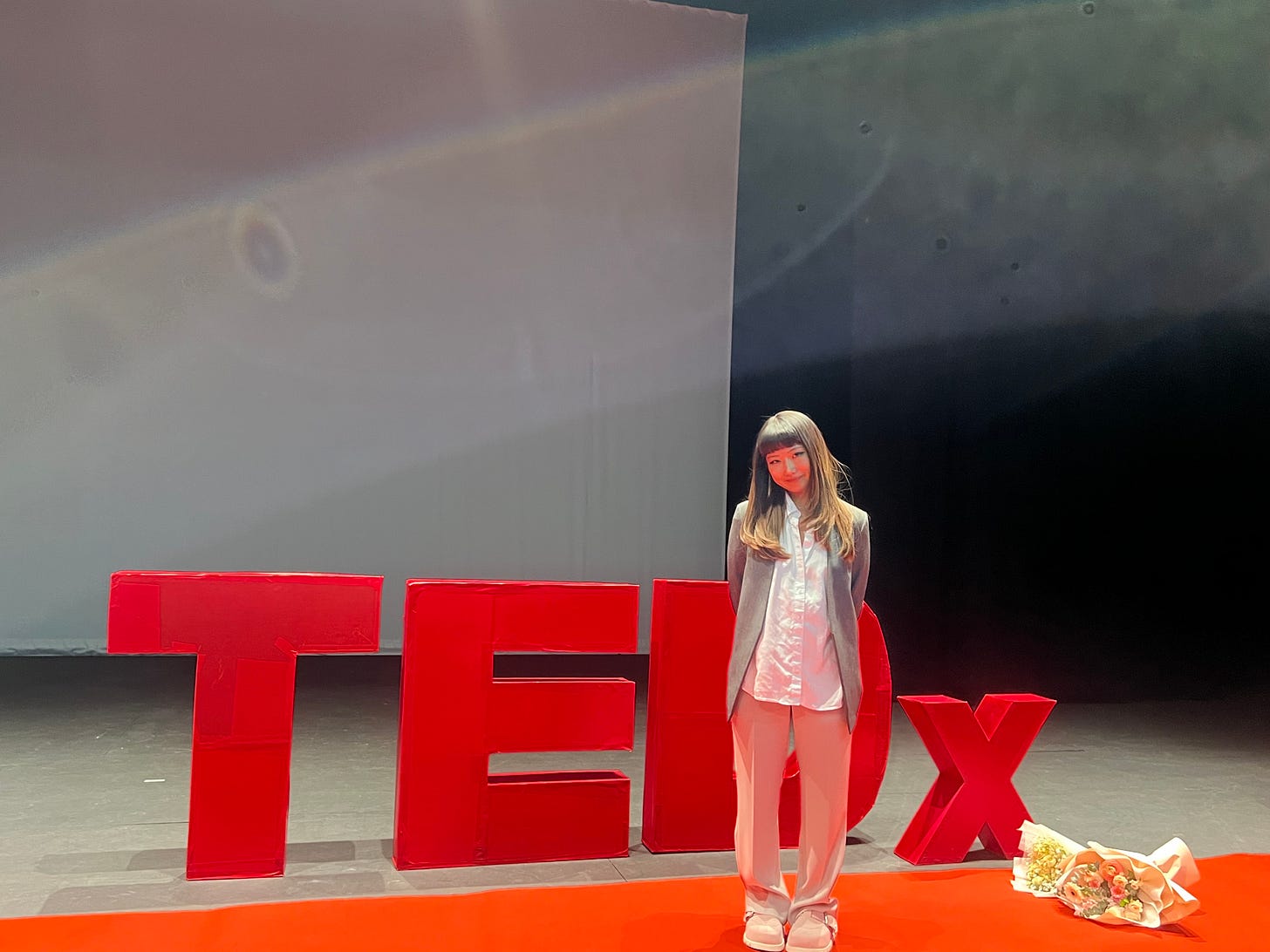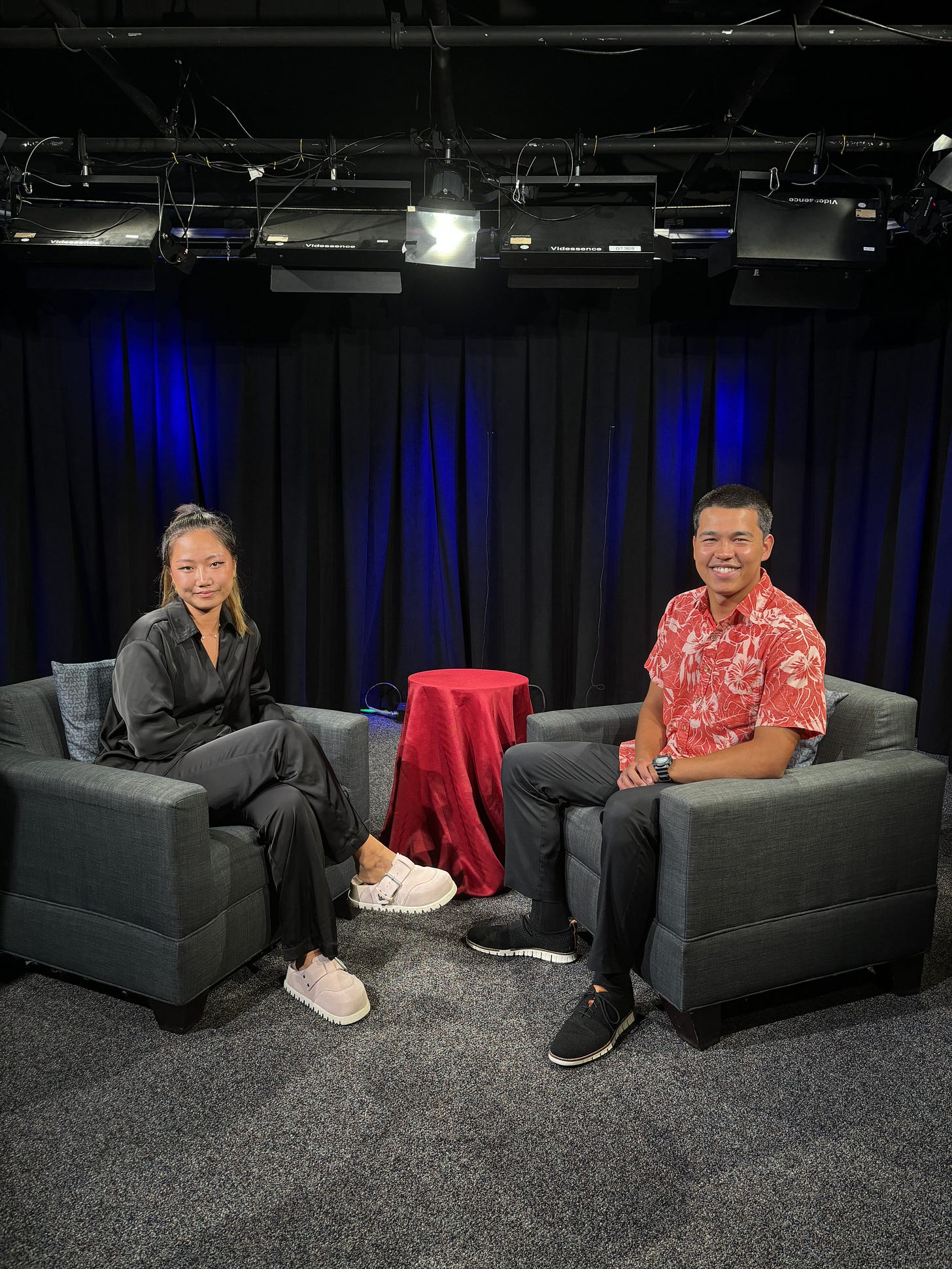She invests in innovative ideas emerging from Hawai‘i
Kia Yang, Director @ Calvin Shindo Student Venture Fund & Managing Director @ BullMont Capital
You can reach Kia at kunlan@hawaii.edu
Here is everything I learned from 2023. I want to hear yours.
Kia Yang saw a job opening on LinkedIn.
She reached out to the company’s founder on LinkedIn and received no response. She applied to the internship but didn’t get it.
Kia decided that she needed to do more research. She looked deeper into the company and discovered its founder, Paul, on YouTube.
In one video, Paul mentioned that he loves to receive cold emails. So what did Kia do?
At the end of 2023, she sent him exactly that.
Here is a screenshot of her email (names excluded):
Two weeks later, Paul’s assistant emailed and told Kia there was an internship opportunity available. She never asked for anything, but never stopped persisting.
That’s the type of persistence Kia Yang wants to bring to the young business scene in Hawaiʻi through venture capital (VC).
Here is Kia’s story.
Ever since she was young, Kia has been surrounded by entrepreneurship. Her mom ran an education center and her dad ran a restaurant.
When she stepped foot on campus as UH Mānoa, however, she didn’t immediately jump into entrepreneurship. She was the “typical” college student.
Near the end of her second year at UH, the entrepreneurial seed, planted when she was younger, sprouted into action.
Kia recalls how she became involved in the student venture fund at UH.
She attended a networking event one night, and everyone had an agenda. The people there weren’t sharing their stories or genuinely connecting—they just wanted jobs.
“They were there with an ask,” she said.
One student stood out from the rest. He wasn’t planning or scheming. He was laid back.
“I’m just here for a good time,” he said.
Kia was curious, and he was one of the only people who seemed to have a genuine story to share.
They struck up a conversation and by the end, he recommended she join PACE.
What is PACE?
PACE is the Pacific Asian Center for Entrepreneurship at UH. The center has a new co-working space open to students of any major.
For students who want to start a business, the center offers free legal advice, consulting and access to mentors.
She reached out and a few months later she was in. In a matter of time, she became more involved, rising to the director of the student venture fund.
What the heck does Kia do?
In simple terms, she invests in innovative ideas emerging from Hawaiʻi through a student venture fund made up of 10 exceptional students, ranging from undergraduates to MBAs in engineering, business and law.
“When startups apply for funding, they don’t just receive capital; they gain a dedicated team committed to their success,” Kia explained. “The fund conducts months-long due diligence and provides ongoing support to ensure students thrive after the investment.”
She believes VC can help students scale their dream to reality.
I want a piece of that pie!
Hold on now, if you are anything like me, you better slow your roll. It’s not that easy.
I pretended to be a student founder and asked Kia how I could get funding from the venture fund. The process looks like this:
A student founder pitches a business idea during a competition at UH and an audience chooses recipients of an initial grant. The grant, called the Kalo Grant, is an award of $1,000 in early funding.
It allows entrepreneurs to continue building their ideas.
After receiving that initial funding, the student competes in the UH venture competition, the winner of which receives $10,000 in grant funding.
No, it’s not done yet.
The student then attends the summer launch pad, after which the student can apply for venture funding from the student venture fund.
Kia and her team vet these ideas to find potential. Then she makes recommendations to a board of seasoned investors.
Then the fund invests in these students and provides them continued support.
This year, the fund is expanding its portfolio to include educational technology (EdTech), regenerative agriculture, hardware and climate tech.
“The market we are looking at is the student with expertise. They have stories; they have a reason why they are doing what they are doing,” Kia said. “How do we help them take what they are offering but scale it up from there?”
World Travels & Ted Talks
“She’s all business” you might think. Despite her dedication to learning the ins and outs of venture capital, she takes on other adventures.
Kia has been to 25 countries. That’s crazy.
As part of her craziest adventure, she backpacked across Europe, visiting 13 countries in a month.
“One of my earliest dreams was to travel the world.”
When she travels she tries, as much as possible, to avoid being a tourist. She wants to interact with local people to get a glimpse of the culture there.
“That opened up my eyes and helped me develop a worldview,” she told me.
That worldview helps her to frame the role of Hawaiʻi in the broader world.
Along with traveling, I mentioned Ted Talks. Kia actually gave one.
She talked about her perspective on finding purpose in life. Yeah, that’s pretty intense.
I got her approval, albeit with some dissent, to share her Ted Talk with all you readers.
But she hates public speaking!
Then why do it?
She likes to seek out the most challenging things to do. Even though public speaking scared her, she decided that it would be a valuable experience, so she did it.
2 Takeaways from my conversation with Kia
1. Money alone can’t solve the brain drain
Kia told me that there are a lot of resources in Hawaiʻi for entrepreneurs and innovators. PACE is a great example of the opportunities offered to students in Hawaiʻi.
But simply throwing money at any and every idea won’t work. It’s why, Kia explained to me, most of her work at the venture fund is due diligence.
Researching. Verifying. Reporting.
It seems that funds directed properly, at the right ideas, will be the key—not funding alone.
2. Addressing fear can be a good thing.
During the Great Depression, President Franklin D. Roosevelt faced a nation in crisis. In his inaugural address, he said “The only thing we have to fear is fear itself.”
What does that quote from 1933 years ago have to do with today?
It relates to what Kia said in her story of public speaking.
Sometimes doing something, simply because it arouses fear, can be the most fulfilling experience.








